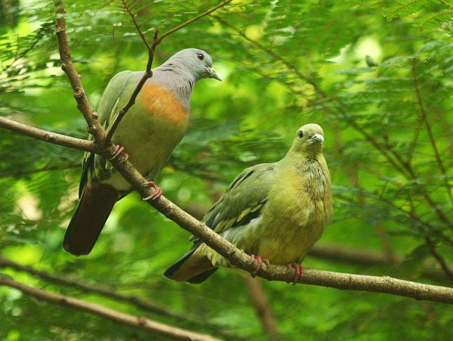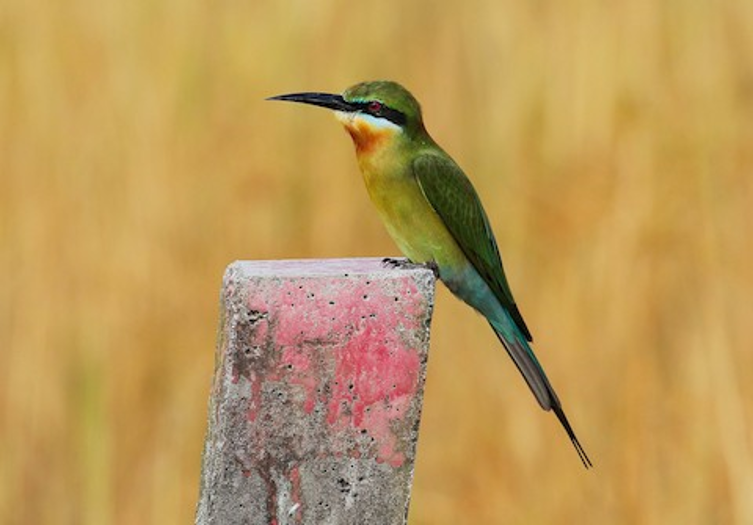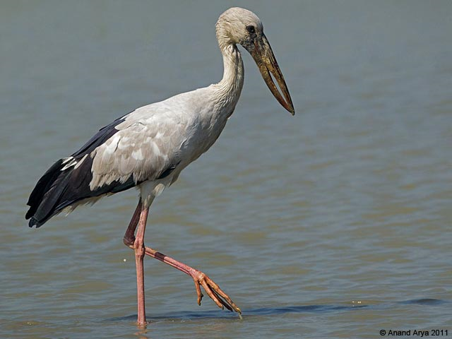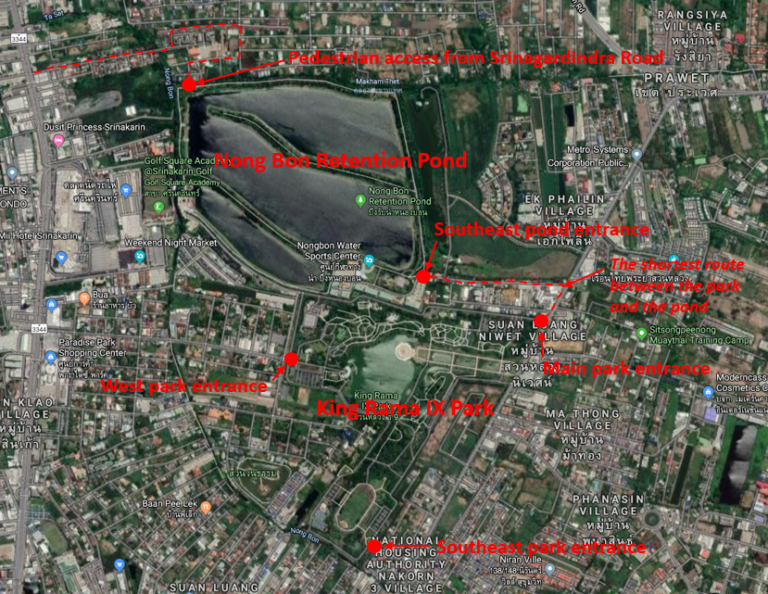King Rama IX Park, Bangkok, Thailand

King Bhumiphol, or Rama IX, Thailand’s revered 20th Century scholar-king, projected the image of a student of nature. Visitors to the Bangkok city park named for him are greeted by a panoramic bas-relief mural sculpture that depicts Rama IX in a natural setting bearing four accessories of a scientist or engineer: a pen, a camera, a surveying instrument, and an attaché case. In combination with the adjacent Nong Bon Retention Pond, this park offers an excellent introduction to Bangkok’s garden birds.
Orientation
Directions
An urban site about 20 km east of downtown Bangkok, King Rama IX Park is accessible by city bus and at some future date also by a metro rail line (under construction in 2020). It is possible to enter the park from either the west or the east, but the best access to Nong Bon Retention Pond is on the east side, which is therefore more convenient for visitors who would like to see both.
East Side. Soi Chaloem Phrakiat Rama IX is a minor north-south artery through the Prawet district that gives access to both King Rama IX Park and the Nong Bon Retention Pond (a.k.a. Nong Bon Water Sports Center). The main entrance to the park is at its northeast corner, and the only formal entrance to the retention pond is at its southeast corner, which lies two blocks north of the park entrance, then several blocks west on Khao Bueng Rap Nam Alley.
West Side. The park’s west entrance is easily accessible from Srinagarinda Road, one of Bangkok’s major thoroughfares. Take Srinagardindra southbound to the Paradise Place shopping mall complex, the turn left onto Soi Muban Seri Villa and continue for about 1 km to the park’s western entrance. Numerous buses serve Paradise Place, so this is the easier entrance to reach by public transportation.
Northwestern Entrance. Nong Bon Retention Pond can be entered on foot through an unpublicized entrance that is accessible from Srinagarindra Road. About 1 km north of Paradise Place, head east on Srinagarindra 45 Alley into a pleasant leafy neighborhood.
After crossing the bridge over Nong Bon canal, take the first left north for one block, then head east again for 250 m, then south for 150 m, then west for 200 m, then south for one block. This street dead ends for vehicles, but not for pedestrians. Continue walking south on the sidewalk, which becomes a footbridge over the canal and joins the path around the retention pond.

Detail of the bas-relief mural sculpture at King Rama IX Park which depicts the king (left) carrying the accoutrements of an engineer. © Russell Fraker
Birdfinding
King Rama IX Park consists of manicured gardens and lawns with large ponds and a few brushy areas mixed in. The birds to be expected on these verdant grounds are mostly widespread garden-dwelling species that are common across much of Southeast Asia.
These include: Zebra Dove, Eastern Spotted Dove, Pink-necked Green-Pigeon, Asian Koel, Plaintive Cuckoo, Asian Palm-Swift, Germain’s Swiftlet, Indochinese Roller, Coppersmith Barbet, Malaysian Pied Fantail, Black Drongo, Yellow-vented Bulbul, Streak-eared Bulbul, Plain Prinia, Common Tailorbird, Oriental Magpie-Robin, Common Myna, Great Myna, Asian Pied Starling, Olive-backed Sunbird, Brown-throated Sunbird, Scarlet-backed Flowerpecker, and Scaly-breasted Munia.

Pink-necked Green-Pigeon is fairly common in the treetops at King Rama IX Park and Nong Bon Retention Pond. © Xavier Rufray
The park is also a likely place to find Small Minivet, which is unpredictable in general but consistent here.
Common winter visitors include: Blue-tailed Bee-eater, Ashy Drongo, Black-naped Oriole, Brown Shrike, Asian Brown Flycatcher, Taiga Flycatcher, and Yellow-browed Warbler.

King Rama IX Park is among the more reliable sites for finding the feathered flame known as the Small Minivet. © Poojan Gohil

Blue-tailed Bee-eater is a common and colorful winter visitor to King Rama IX Park. © Neoh Hor Kee
Nong Bon Retention Pond. Immediately north of King Rama IX Park, Nong Bon Retention Pond is also a park, but it is oriented around physical fitness. The large impoundment affords the use of small watercraft, which can be rented at the Water Sports Center, but most people instead walk, run, or ride bicycles (which are also available to rent) along the paved paths that parallel its shoreline. The perimeter of the retention pond is lined with trees and shrubs that support many of the species mentioned above.
The shores of the pond and its adjacent canals provide habitat for many fishing and wading birds, including: Little Cormorant, Indian Cormorant, Chinese Pond-Heron, Javan Pond-Heron, Black-crowned Night-Heron, Yellow Bittern, Little Egret, Eastern Cattle Egret, Intermediate Egret, Great Egret, Asian Openbill, White-breasted Waterhen, and Whiskered Tern. Painted Storks that evidently reside in an adjacent, inaccessible marsh can sometimes be seen soaring overhead.

The Asian Openbill, with its extraordinary eponymous open bill, is a common sight at Nong Bon Retention Pond. © Arnand Arya

Notes
When to Visit
Both the park and the pond area are open daily from 5:00 to 19:00. The park is especially popular for family outings, so it is best to avoid weekends.
Hazards & Hassles
Although the park and pond are adjoining properties, and on maps they appear to comprise a single site, in fact both properties have secure perimeters with limited access points. There is no direct connection between them. If attempting a combined exploration of the two (which is recommended), it is important to note the locations of the entrances to both properties and plan your route accordingly.
Links